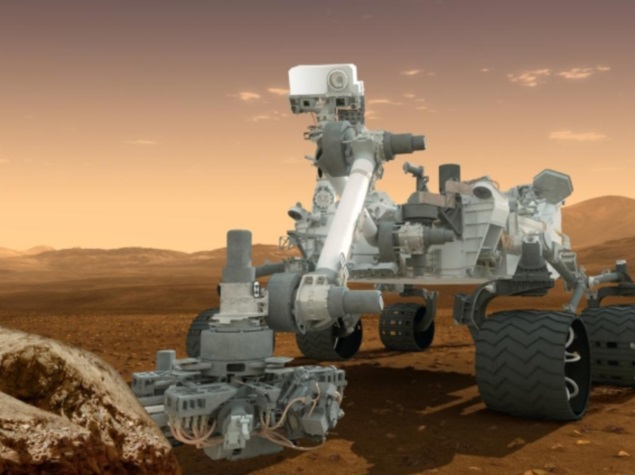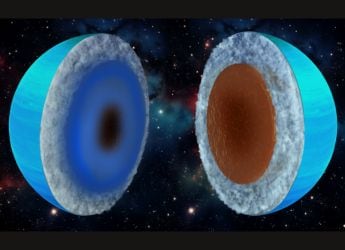- Home
- Science
- Science News
- Nasa's Mars Rover Curiosity Drills First Hole Into Mount Sharp
Nasa's Mars Rover Curiosity Drills First Hole Into Mount Sharp

The rover's hammering drill chewed about 2.6 inches deep into a basal-layer outcrop on Mount Sharp and collected a powdered-rock sample last week, Nasa said in a statement.
Data and images received at Nasa's Jet Propulsion Laboratory (JPL), Pasadena, California, confirmed success of the operation.
"This first look at rocks we believe to underlie Mount Sharp is exciting because it will begin to form a picture of the environment at the time the mountain formed and what led to its growth," said Ashwin Vasavada, deputy project scientist at JPL.
"This drilling target is at the lowest part of the base layer of the mountain and from here we plan to examine the higher, younger layers exposed in the nearby hills," Vasavada added.
After landing on Mars in August 2012, Curiosity spent much of the mission's first year studying an area much closer to the landing site.
"We are putting on the brakes to study this amazing mountain," Jennifer Trosper of JPL noted.
"Curiosity flew hundreds of millions of miles to do this," Trosper maintained.
By investigating the chemical ingredients of the samples, the team hopes to gain information about the possible composition of fluids at this Martian location long ago.
Get your daily dose of tech news, reviews, and insights, in under 80 characters on Gadgets 360 Turbo. Connect with fellow tech lovers on our Forum. Follow us on X, Facebook, WhatsApp, Threads and Google News for instant updates. Catch all the action on our YouTube channel.
Related Stories
- Samsung Galaxy Unpacked 2025
- ChatGPT
- Redmi Note 14 Pro+
- iPhone 16
- Apple Vision Pro
- Oneplus 12
- OnePlus Nord CE 3 Lite 5G
- iPhone 13
- Xiaomi 14 Pro
- Oppo Find N3
- Tecno Spark Go (2023)
- Realme V30
- Best Phones Under 25000
- Samsung Galaxy S24 Series
- Cryptocurrency
- iQoo 12
- Samsung Galaxy S24 Ultra
- Giottus
- Samsung Galaxy Z Flip 5
- Apple 'Scary Fast'
- Housefull 5
- GoPro Hero 12 Black Review
- Invincible Season 2
- JioGlass
- HD Ready TV
- Laptop Under 50000
- Smartwatch Under 10000
- Latest Mobile Phones
- Compare Phones
- Redmi Note 15 5G
- Redmi Note 15 Pro 5G
- Redmi Note 15 Pro+ 5G
- Lava Play Max
- Poco C85 5G
- Honor Magic 8 Lite
- Jolla Phone
- Realme P4x 5G
- Asus ProArt P16
- MacBook Pro 14-inch (M5, 2025)
- OnePlus Pad Go 2
- Poco Pad M1
- Just Corseca Skywatch Pro
- Honor Watch X5
- Acerpure Nitro Z Series 100-inch QLED TV
- Samsung 43 Inch LED Ultra HD (4K) Smart TV (UA43UE81AFULXL)
- Asus ROG Ally
- Nintendo Switch Lite
- Haier 1.6 Ton 5 Star Inverter Split AC (HSU19G-MZAID5BN-INV)
- Haier 1.6 Ton 5 Star Inverter Split AC (HSU19G-MZAIM5BN-INV)

















